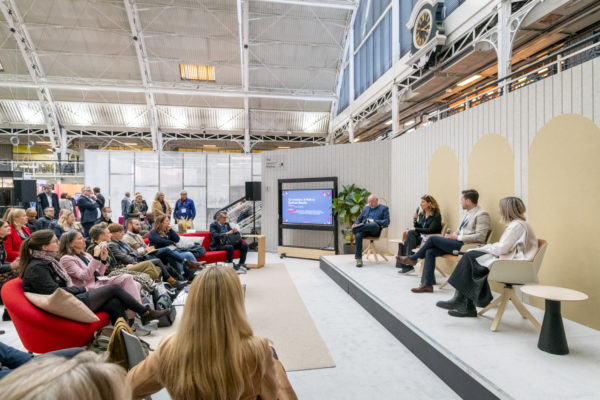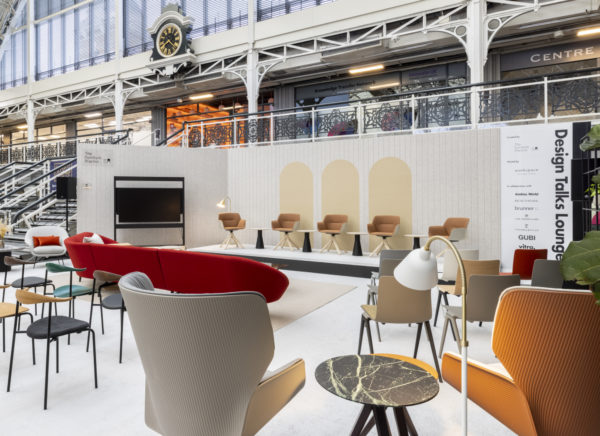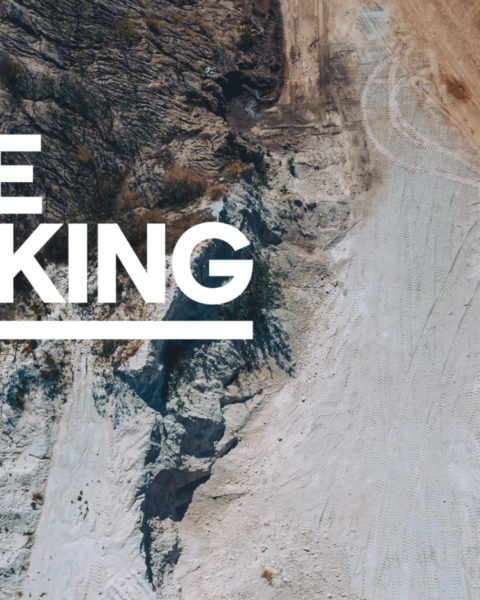Insights from the Workspace Design Show Talks
We were delighted to have curated the Design Talks Lounge at the recent inaugural edition of the Workspace Design Show. It was fantastic to be part of the show and lovely to see so many familiar and new faces across the two days.
As the Talks Partner, we designed the space with comfort in mind, setting the scene for visitors to hear a diverse and deeply experienced selection of speakers talk on a wide range of topics. The talks were incredibly well attended with every seat taken and delegates happy to stand at the back. It really was a great two days of debate and we've captured here a small selection of key insights from across the panel discussions.

Linda Hausmanis, CEO of the Institute of Workspace and Facilities Management (IWFM), opened the show with a keynote address that focused on IWFM as the lynchpin profession and having a role to play in helping organisations achieve their goals. She talked about the profession’s focus moving from the management of buildings to issues such as sustainability, collaboration, wellbeing, diversity and inclusion, where culture, innovation and the use of technology were critical enablers for achieving our best work. These were themes that were echoed many times in the debates and panel discussions that followed.
The Future Workspace
"Agile working means utilising space more efficiently, which means removing ownership of space and making space more ‘communal’."
Robert McLean, Head of Real Estate and Design, PwC
Various debates referred to the ‘war on talent’ and what companies need to consider when thinking about how they can attract and retain staff – the younger worker in particular. Several speakers commented that furniture solutions need to remain as fluid as possible, as we don’t know how things will pan out regarding remote working. There is a need to build in flexibility for clients so they can continue to experiment.
Co-working
Demand for co-working space is booming and occupiers are not wedded to traditional commercial office design and fit out. Amenity spaces (e.g. gyms, cafes, meditation rooms, etc.) are becoming increasingly important for attracting younger companies. These amenities are being added by property owners (landlords) even though they may not be revenue-generating. Companies seek out spaces that are going to enhance the wellbeing of staff.
Co-creation
"Co-Creation starts with getting to the central question by asking – how might? How could? What if? Never ask: ‘What do you want?"
Zoe Humphries, Regional Director of AECOM People & Place Advisory
The benefits of approaching workplace design through the process of co-creation revealed that success relies on the involvement of a diverse group of people – i.e. ensuring that the right voices are in the room - and the roles of both the employer and employees are important in the process.
Maria Papadopoulou, Associate Interior Designer at Perkins & Will, explained, "Co-creation is a human-centric design process that starts with concept design and involves collective design thinking with the users very much at the centre of the process.”
Ed Hoban, Associate Director and Head of Workplace at TFP, added: “From a furniture perspective, the selection of products procured is a direct result of the preferred employee solution which can lead to greater 'ownership’ and overall success of a project."
Designing a neurodiverse workplace
Neurodiversity was a theme touched on by several of the panel speakers. Designing for neurodiversity needs designers and specifiers to think about a host of different requirements including: ‘muted’ zones that take account of noise, colour, glare and smell; quiet zones and design that considers alternative lighting (e.g. circadian lighting to support staff health and wellbeing).
Naslim Koerting, Head of Design for The Office Group commented: “The move towards circadian lighting is very strong. We recognise it has huge cost implications but we hope that the market will catch up to make it more cost-effective.”
Sustainability
“Make it tangible; make it realistic. If we change our small habits, collectively we can have a huge impact.”
Deepak Parmar, Design director, MCM Architecture
With construction contributing a significant amount to the whole of the UK’s waste, many panellists pointed out there is much the industry could and should be doing to become more sustainable. What is needed is a complete change of mindset which needs occupiers, agents and designs to work together to break the cycle of how things are done.
In summary, quite a collection of topics, thoughts and insights were presented over the two days and as Linda Hausmanis, CEO of the Institute of Workspace and Facilities Management (IWFM) said in her opening address, the hybrid/non-hybrid debate still continues with many unanswered questions. However, what is certain is that the pandemic has accelerated the path many companies were already on. It will be interesting to revisit these key insights in a year from now to see where and how the debate has shifted.

The Design Talks Lounge
When designing the Talks Lounge, our goal was to reduce waste and be as environmentally friendly as possible in our choices. We collaborated with a selection of furniture brands from our extensive supplier list to utilise existing sample products, ensuring that all items would be re-used post-show. See our Design Talks Lounge Lookbook to find out more about the products and brands featured in the space, including Andreu World, Benchmark, Brunner, Carl Hansen, The Collective Agency, Gubi and Vitra.
Explore More


